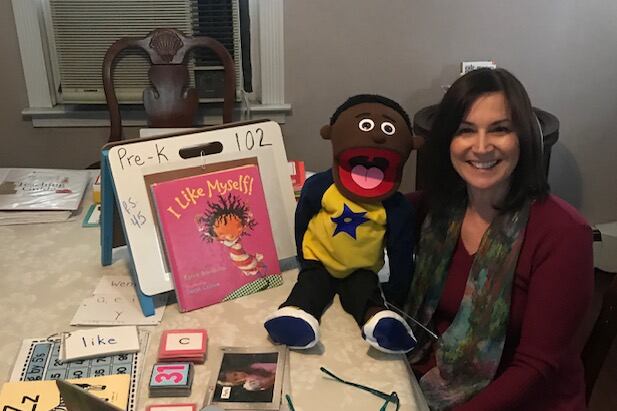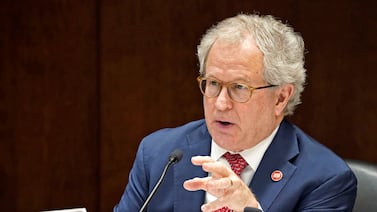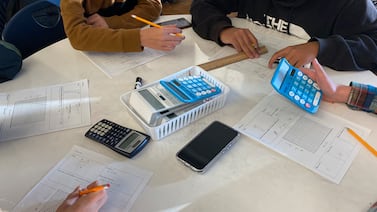When New York City’s 1,800 public schools went remote in late March due to the growing COVID-19 pandemic, many educators began live-streaming their morning meetings and lessons. Others did not.
Schools could not mandate that educators do live teaching, according to the teachers union rules. Education department officials don’t know how many of its 1 million public school students are receiving live instruction.
That’s changing for summer school, which starts July 6. Teachers must provide live instruction for at least an hour and 15 minutes daily for the roughly 102,000 students expected to take classes over the next two months.
It can be difficult to engage with students during live lessons, say some teachers, who now have months of remote instruction under their belts. Many are still figuring out what works and what doesn’t. With up to 20% of New York City teachers potentially working from home next fall due to COVID-19 concerns — and with some families preferring to keep their children out of school buildings — live online lessons could be a big part of next year. Education department officials did not say whether they would require live instruction from these or other teachers in the coming year.
“We do not yet know what this virus will look like in September, but we are planning multiple reopening scenarios that will give every child the academic support they need while keeping them safe,” said education department spokesperson Danielle Filson. “Our goal is to provide as much in-person learning as possible.”
For summer school, teachers can provide live instruction to an entire class, in small groups or in one-on-one meetings. Students with disabilities who are mandated to have year-round schooling will also receive live instruction for at least two hours each day over the summer, officials said.
More live instruction will likely be welcomed by many parents, according to data released by the nonprofit Learning Heroes. In a national poll, the organization found that 42% of parents valued live classes, but only 26% said that their children had them.
Barriers to such real-time instruction remain: it can be hard for some students to join live sessions, for instance, because they lack technology or reliable internet. Some students might not feel comfortable keeping their web camera on when they’re home, or they may feel sensory overload when the whole class is in a meeting.
Many teachers have learned that streaming does not necessarily mean that students are paying attention any more or less than they would to pre-recorded lessons. And teaching live can also be difficult for teachers, who might have their own family around or other distractions.
“The physical space is difficult. I live in a one-bedroom apartment with my boyfriend. He’s on the phone 75% of the day for his job so there’s been a lot of, like, moving to the bedroom and shutting the door,” said high school English teacher Gabrielle Utting.
Chalkbeat talked with educators to find out some of the best practices for live teaching and how to get students to engage online. Many have found more success working with small groups and have learned that, to the extent possible, tailoring instruction to individual students — and family needs — is key. Here are some teacher takeaways.
Small groups can be more effective than classwide meetings
Utting, who teaches English at Manhattan’s School for Environmental Studies, prefers doing live sessions with smaller groups instead of teaching in real time with the entire class online. She tried larger meetings but realized many of her students weren’t fully engaged. Those all-class sessions were filled with awkward silences and students who kept their cameras off, she said.
“Nothing about it feels natural. It’s very forced,” she said. “It wasn’t as productive for me in the beginning, which is why I started doing live chats on a rotating schedule with smaller groups.”
When she began implementing small book groups for an AP Literature class, she noticed a difference: The students were actually talking with each other and had turned their cameras on.
Facilitating student-to-student interactions is still one of the hardest aspects about remote teaching, she said. Utting has experimented with a variety of digital platforms, like a program called MURAL, which allows students to collaborate by adding pictures and comments. The result is a kind of group mural project. Utting uses the platform for activities, such as college essay brainstorming and end-of-year reflections.
Fifth grade science and math teacher Michael Cornell, of Harlem’s Thurgood Marshall Academy, also relies on small groups for his live lessons. He meets with a different group of kids in the mornings each day of the week and also assigns existing instructional videos for them to watch.
“The schedules are so diverse,” he said, noting that families had different situations in terms of device access or home responsibilities like having to babysit siblings, which is why asynchronous — or taped — lessons were also important. “You can’t really expect to have any type of whole group live instruction on a consistent basis.”
Pre-K teacher Donna Pizzi, of P.S. 245 in Staten Island, also relies on meeting with groups of three or four children for 15 minutes at a time. Like Utting, she tried meeting with her entire class at first but quickly broke things up, which has provided space for each student to speak.
“If I’m doing one activity with 18 kids,” she said, referring to the total number of students in her class, “not all 18 are going to be as fully engaged as I would like.” In addition to the groups, she has been hosting one-on-one sessions and play dates for her students, who are learning social skills and can benefit from her facilitation.
You have to accommodate both the needs of the student and their family
Given that the circumstances vary greatly between families, many teachers have learned they have to address students’ particular needs. That might mean offering alternative assignments or arranging one-on-one meetings to provide additional help.
“The hardest thing for me as a teacher has been to be as flexible and accommodating as I possibly can be for students,” Utting said. ”Not every student is available at the exact same time. Not every student’s in the exact same situation.”
Some of Utting’s students have had illness or death in their families due to COVID-19 and haven’t been able to attend some sessions. Recently, more of her students are beginning to get jobs to contribute to their household budgets, she added.
“While I do want to keep providing that face-to-face contact, I’ve spent a lot of time working on alternative assessments and alternative assignments that students can do on a schedule that works best for them,” said Utting.
For example, while Utting might host a live video meeting to discuss a book, she also allows students who were unable to attend to post their discussion to a chat board. She tailors her feedback to the particular student. Sometimes, feedback is just a quick written reflection on their work. Other times, she will set up individual meetings with students who are struggling.
Utting said she’s also been doing a lot of parent outreach, which often means working around their schedules and arranging meetings outside of her typical work hours.
Similarly, social studies teacher John Castaldo, of the High School for Public Service in Brooklyn, has had students miss sessions because parents or other family members had COVID-19. While he says overall student work has been strong, he also finds that attendance varies due to the circumstances. He said he’s had days where he reaches 80% attendance and others where only about 50% of students show up.
“We had some dark weeks,” said Castaldo. “We had a lot of death in the school community in terms of students losing relatives.”
Some students also have to share devices with their siblings or even parents, he said, noting that he teaches a set of twins who alternate their use of the computer. Still, he said student work has been pretty strong. He also offers additional help for students through office hours.
For Cornell’s fifth-graders, the biggest challenge has also been showing up. A student’s attendance may be a result of family dynamics, and some students may never be able to attend a live session. He finds himself communicating with families through platforms such as Class Dojo — a communication tool for parents, teachers, and students — along with text messages and phone calls.
“If you don’t have the relationship with the family,” Cornell said, “it’s much much more difficult to be able to support the child properly.”





